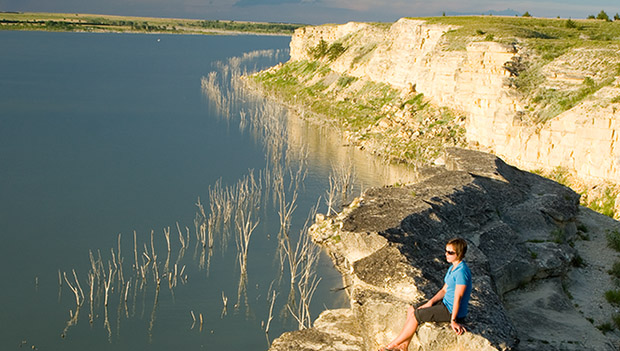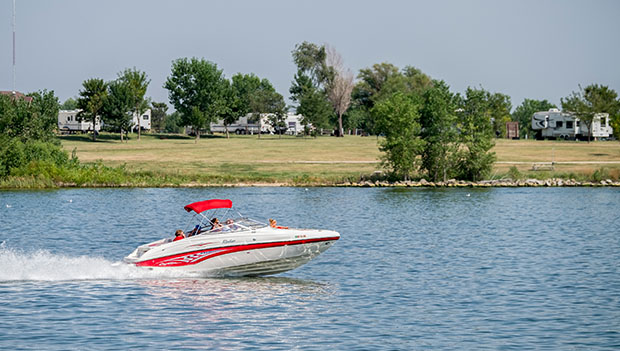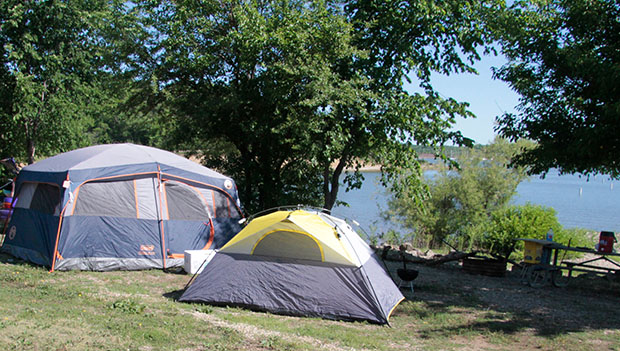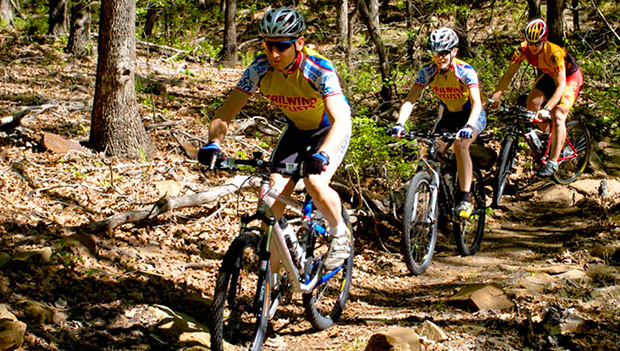
Kansas offers a rich tapestry of landscapes, from rolling hills and vast prairies to deep, clear lakes and unique geological formations. Exploring the Kansas State Parks by region is a great way to discover your next outdoor adventure. Whether you’re looking for a challenging mountain bike trail, a serene spot for fishing, or a family-friendly camping experience, this guide will help you easily find and book your perfect getaway.
The state is divided into six distinct regions: Northwest, Southwest, North Central, South Central, Northeast, and Southeast. Each region has its own character, attractions, and beautiful state parks ready for you to explore.
Regions: Northwest, Southwest, North Central, South Central, Northeast, and Southeast
Northwest

Most of the Northwest Region is part of the High Plains physiographic region, known for excellent farmland and shortgrass prairie. The eastern part features the Smoky Hills grassland, home to species like the greater prairie chicken. Notable landmarks include Mount Sunflower, the highest point in Kansas at 4,039 feet, and the impressive 70-foot-tall chalk structures of Monument Rocks. This region also features the small “badlands” area known as the Arikaree Breaks.
- Cedar Bluff – The park boasts two recreation areas, encompassing 1,100 acres along the shore of Cedar Bluff Reservoir. Adventurers will enjoy a stunning view of the lake from the top of the 150-foot-high limestone bluffs.
- Prairie Dog – Occupying 1,150 acres on the shores of Keith Sebelius Reservoir, this park is known for its thriving prairie dog town (estimated at 300 prairie dogs). Visitors can enjoy The Steve Mathes Nature Trail, a 1.4-mile pathway with seasonal storybook signs.
- Webster – A sandy beach awaits visitors on Webster Lake amid rolling hills. Fossils dot the rock formations around the lake’s clear water. The park’s Coyote Trail is a 3-mile nature trail with interpretive stations. The reservoir serves as a stopover for all kinds of migratory birds.
Southwest

The Southwest Region includes vast preserved areas and fascinating historical and natural landmarks. Explore the fascinating history of the most northern and eastern Pueblo settlement in North America at The El Cuartelejo Museum and Jerry Thomas Gallery and Collection. Campers, hunters, and hikers can enjoy the massive, preserved Cimarron National Grassland, spanning 108,175 acres.
- Historic Lake Scott – Located in the western Kansas prairie, this park offers natural springs, deep wooded canyons, and craggy bluffs surrounding the 100-acre, spring-fed Scott State Fishing Lake. Water-sports enthusiasts can enjoy a swimming beach and seasonal rentals. Nature trails accommodate hikers and horse riders.
- Little Jerusalem Badlands – A spectacular eruption of Niobrara chalk formations covering 330 acres, often called Little Jerusalem because the bluffs can resemble the Walls of Jerusalem. The chalk sediment was deposited 80 million years ago when a sea covered much of Kansas. It provides important habitat for various wildlife and is home to the largest population of Great Plains wild buckwheat in the world.
- Meade – Known as the “Oasis on the Plains,” Meade State Park comprises 443 acres of shortgrass prairie and recreational facilities situated around the 80-acre Meade State Fishing Lake. Visitors enjoy RV and primitive sites, a swimming beach, and the new Wild Wood Playground. The area has a rich history with the Civilian Conservation Corps/Works Projects Administration.
North Central

The North Central Region encompasses parts of the High Plains, the Flint Hills, and the Glaciated Region, all featuring rolling hills. The region is near Kansas State University in Manhattan, allowing visitors to enjoy both the outdoors and college-town activities.
- Glen Elder – This 1,451-acre park is on the shores of Glen Elder Reservoir (Waconda Lake). It features the Chautauqua Fishing Pond, accessible for individuals with disabilities, and is stocked with trout in the winter.
- Kanopolis – The first in the Kansas State Park system, set in the scenic Smoky Hills. The park features rugged beauty, including towering Dakota sandstone bluffs and the caves and crevices of Horsethief Canyon. The 27 miles of trails are open to hikers, mountain bikers, and horseback riders. The park also surrounds the 3,500-acre Kanopolis Reservoir.
- Lovewell – Offers a blend of camping, fishing, and wildlife watching. The Pioneer Day use Area features a playground, disc golf, and sports courts. Water-lovers will enjoy the 2,900-acre reservoir and a full-service marina. The Southwinds Swimming Beach is a popular sun and sand option.
- Milford – A favorite getaway on the shores of the state’s largest lake, the 1,600-acre Milford Reservoir, popular for boating, sailing, and outstanding fishing. It features a large sailing club and a multi-purpose trails system. The horse campground is ideal for equestrians, offering full hook-ups and covered corrals.
- Mushroom Rock – A small, 5-acre day-use-only park tucked into the Smoky Hills. The namesake mushroom rocks are a geological oddity, remnants of beach sands and sediments from the Cretaceous Period, held together by natural cement. The largest rock measures 27 feet in diameter. No camping or permits are required.
- Tuttle Creek – Located near Manhattan, this park offers a wide variety of outdoor recreation. Tuttle Creek Reservoir, the state’s second largest impoundment, has more than 100 miles of rugged, wooded shoreline. It features one of the steepest mountain-biking trails in the state, drawing riders nationally.
- Wilson – Set in the scenic Smoky Hills, Wilson State Park provides access to Wilson Lake, the deepest in Kansas, which satisfies boating and water sports enthusiasts. The Switchgrass Mountain Bike Trail is a 24.5-mile trail, designated as an “Epic Trail” by IMBA.
South Central

This region features a mix of six landscapes, including High Plains, Arkansas River Lowlands, Red Hills, and a large swath of the Flint Hills—scenic pastureland named for its flint rock and bluestem grasses. The region is near the Tallgrass National Prairie Preserve and important bird migrating areas like Cheyenne Bottoms and Quivira National Wildlife Refuge.
- Cheney – Only 20 miles west of Wichita, the park covers 1,900 acres framing Cheney Reservoir. Known for its dependable winds, the lake draws sailboaters and windsurfers from around the country. The Ninnescah Sailing Center is a popular spot, and the park has a marina and 22 boat-launching lanes.
- El Dorado – Kansas’ largest park, sprawling across 4,500 acres on the western edge of the scenic Flint Hills. It features a large ADA archery range, an impressive amphitheater, and seven trails for hikers, bikers, and horse riders.
- Sand Hills – Located near Hutchinson, the park features trails winding through 1,123 acres of sand dunes, native prairie, wetlands, and woodlands. It offers five horse-friendly trails and a designated campground area with corrals for equestrians.
Northeast

Much of the region is the Glaciated Region, known for hills and valleys with quartzite deposits, as well as parts of the Flint Hills and Osage Questas. Visitors can tour the University of Kansas campus or explore Miami County, known as Kansas’ wine region. The Flint Hills Trail State Park is a 117-mile linear park running through this region.
- Clinton – Just four miles from Lawrence, this 1,425-acre park rests on the north shore of Clinton Reservoir, known for its clear water and good fishing. It’s well known for its extensive trail system for hikers, mountain bikers, and cross-country skiers. Clinton Lake Marina is the largest full-service marina in the state.
- Eisenhower – Named after the native Kansan President, this 1,785-acre park features 1,000 acres of tallgrass prairie and is popular with equestrians. Recreation facilities include an 18-hole disc golf course, an archery trail, and a kids’ fishing pond. Visitors can stay in popular cabins or unique yurts.
- Flint Hills Nature Trail – A 117-mile rail-trail and the state’s second linear state park. It follows an original Missouri Pacific Railroad line and is open to non-motorized traffic like horseback riders, bikers, and hikers. The trail links five counties and intersects with the Prairie Spirit Trail State Park in Ottawa.
- Hillsdale – Offers a broad array of outdoor recreation in the rolling hills. Horseback riding is popular at the Saddle Ridge Equestrian Area. An area just south of the dam is designated for radio-controlled model-airplane flying. The reservoir has 51 miles of shoreline for fishing.
- Kaw River – The only urban park in Kansas’ state park system, consisting of 76 acres along the south bank of the Kansas River in west Topeka. It features trails designed for sustainability and a boat ramp for access to the river for small watercraft. No daily entrance fee is required.
- Perry – Nestled in the forested hills, boasting a 12,500-acre reservoir and an 11,000-acre wildlife area. Horse riders appreciate the 16.5 miles of upland forest riding trails. The wildlife area offers extensive wetlands that attract waterfowl each fall.
- Pomona – Well known for its shaded campsites and family atmosphere, nestled in an area with historical connections to the Santa Fe Trail. Lighthouse Bay Marina provides full services. The Southwind Shelter House is available year-round for gatherings.
Southeast

The Southeast area is predominately made up of the Osage Questa Region, which has steeper slopes, and the Chautauqua Hills, which includes remnants of thick limestone.
- Crawford – Rich in history and spectacular scenery, giving visitors a “taste of the Ozarks.” The park dates back to the 1930s when the Civilian Conservation Corps (CCC) built the 150-acre lake. A short interpretive trail leads to a CCC memorial. Shady campsites are peppered among a mature oak forest.
- Cross Timbers – Accounts for 1,075 acres in the northern reaches of the Cross Timbers physiographic region, thick with hardwood trees and grasslands. It provides access to the 2,800-acre Toronto Reservoir. The area showcases some of the most diverse flora and fauna in Kansas.
- Elk City – Includes 857 acres where oak-hickory woodlands meet rolling meadows. Four miles of trails stretch across the park, which is open year-round, leading through open prairies and limestone bluffs. An adjacent 12,000-acre wildlife area provides ample room for pastimes.
- Fall River – Home to a remarkable diversity of plant and animal life, a unique blend of forested floodplains, blackjack savannahs, and tallgrass prairie. Many visitors enjoy canoeing Fall River, which feeds into the 2,450-acre reservoir. Six hiking trails offer excellent opportunities for naturalists.
- Prairie Spirit Trail – The first rails-to-trails site in Kansas and a unique linear park that follows the old Leavenworth, Lawrence and Fort Gibson Railroad bed. The 51-mile trail spans three counties, connecting with the 7-mile-long Southwind Rail Trail. It’s open to pedestrians and bicyclists and is a mix of hard-packed limestone and asphalt.